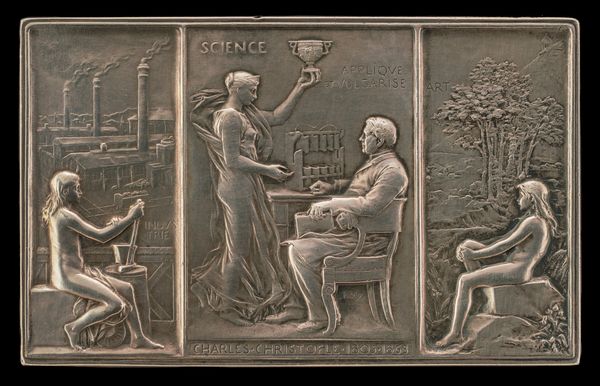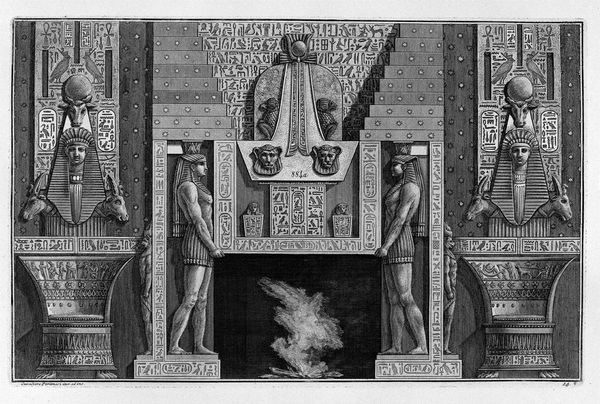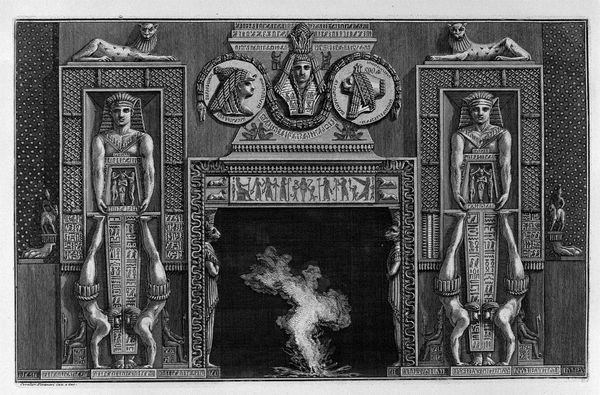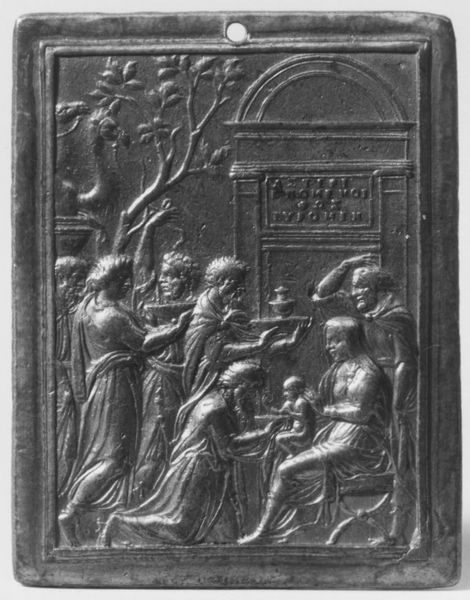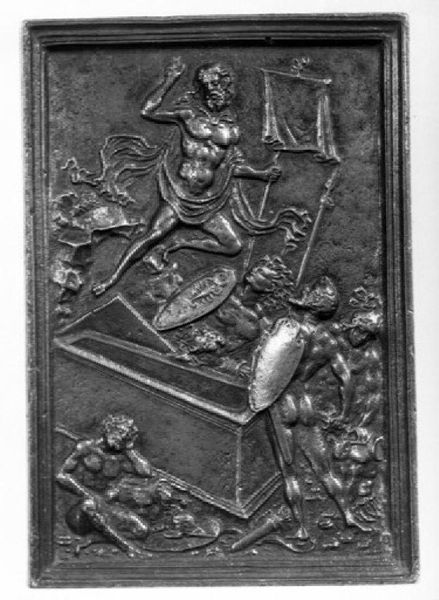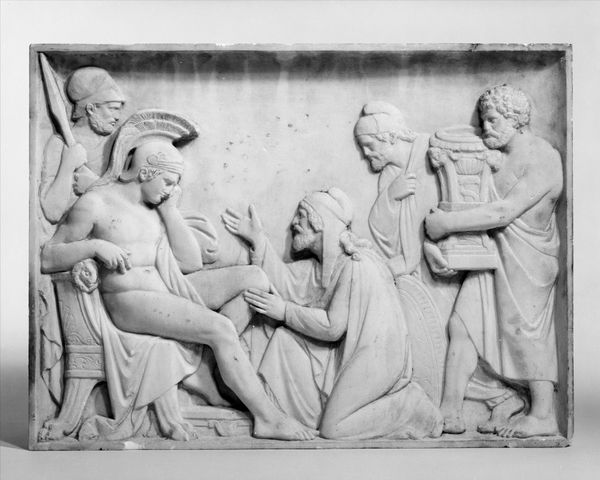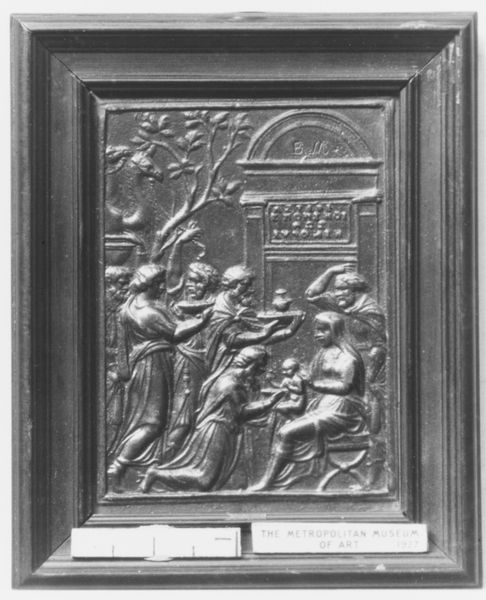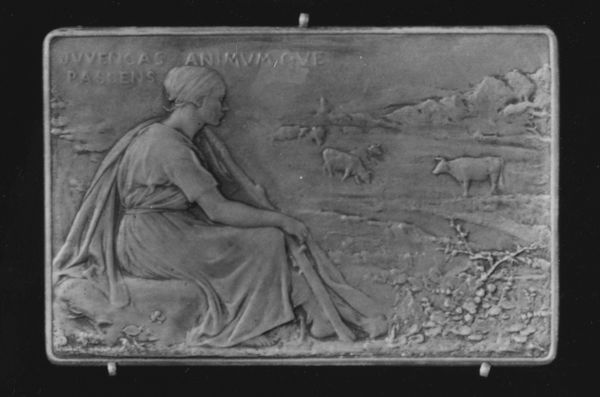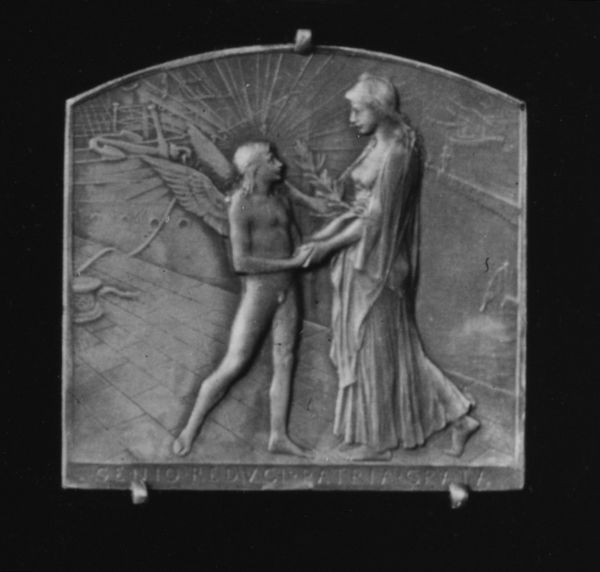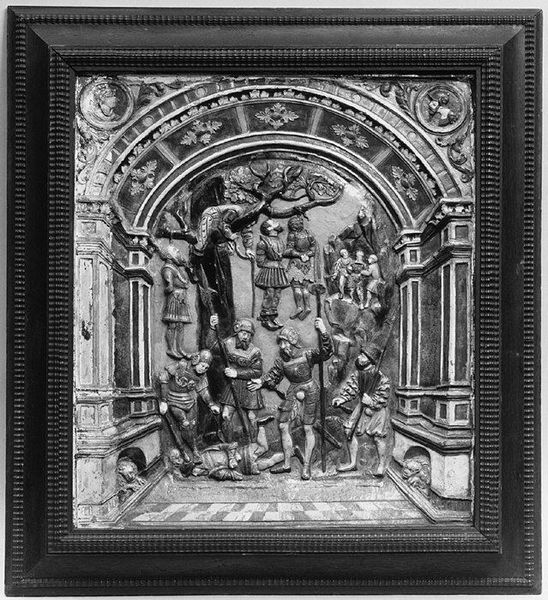
To Commemorate the Jubilee of the Maison Christofle, 1842–92 1893
0:00
0:00
metal, relief
#
portrait
#
medal
#
allegory
#
narrative-art
#
metal
#
relief
#
landscape
#
figuration
#
history-painting
#
decorative-art
Dimensions: 2 5/16 × 3 3/4 in. (59 × 95 mm)
Copyright: Public Domain
Curator: This relief sculpture, titled "To Commemorate the Jubilee of the Maison Christofle, 1842–92," by Louis-Oscar Roty, dates back to 1893. It’s made of metal, and I think it's meant to celebrate industry. I'm curious, what aspects of its cultural or production context particularly stand out to you? Editor: The way it's divided into three distinct scenes strikes me first. On the left, we see someone working, with industrial buildings in the background. The center has a seated figure, seemingly receiving something from another. And on the right, we have a person relaxing, with trees and foliage behind. How does this breakdown fit within a late 19th-century social narrative? Curator: Absolutely. I’d encourage you to think about what this division signifies. What do you observe in the labor, or process, displayed in the leftmost scene, set against an industrial background? It calls to mind an emphasis on artisanal beginnings transformed by mass production of metal works—hallmarks of the Christofle firm. Does the act of producing a medal inherently link its subject matter with high value? Editor: So the metal itself emphasizes the Maison Christofle's value, and links the process of making with the image? I also notice the figure of "science", who is perhaps offering expertise... but the relationship between those offering expertise, those undertaking manufacture, and those experiencing leisure is left unexplained. Is Roty trying to naturalize those industrial hierarchies? Curator: Precisely. Note also the sharp distinction in environments, the stark contrast in backgrounds, and the almost allegorical roles assigned to figures to tell a historical narrative. What this medal perhaps misses, or maybe intentionally excludes, are the people that are consuming this labour. Why do you think Roty omitted their point of view? Editor: That makes a lot of sense now, considering the material used and how it connects back to the commemorative purpose. Thinking about the absence of those consumers does highlight the intended audience of the medal as being those in that same production cycle. Curator: Precisely, reflecting upon those cycles and the relationship between industry and art gives us insight into not only this commemorative medal but its place as material culture, too. It challenges conventional notions of beauty and reminds us that meaning is constructed through the tangible realities of creation and the world that consumes these goods. Editor: Definitely gives me a different appreciation for medals and other commemorative works that seem ubiquitous today. Thank you!
Comments
No comments
Be the first to comment and join the conversation on the ultimate creative platform.
